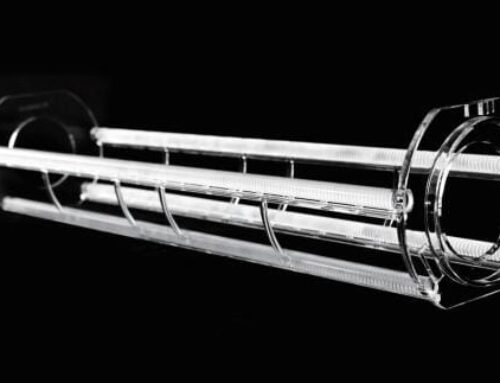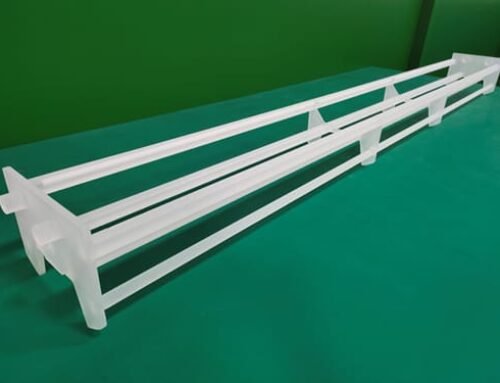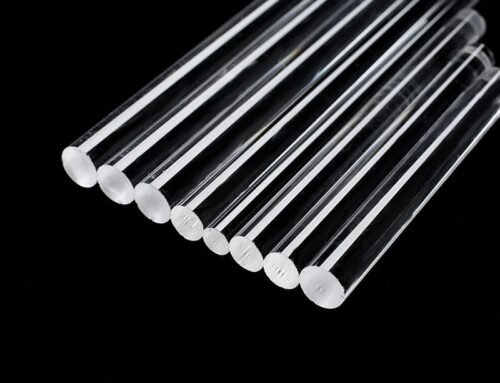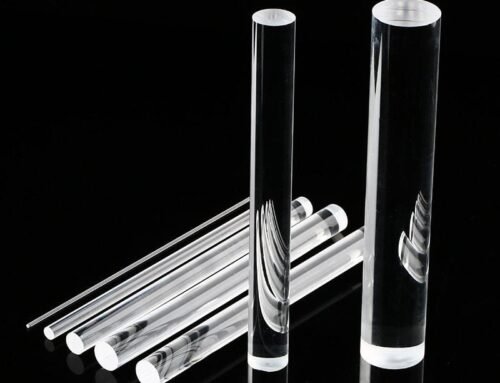Introduction to Semiconductor Grade Quartz
Semiconductor grade quartz plays a pivotal role in the semiconductor industry, serving as a critical material in the production of various components used in semiconductor manufacturing. This specific grade of quartz is distinguished by its high purity, which is essential for ensuring the reliability and efficiency of semiconductor devices. Any impurities present in the material can lead to defects in the wafer manufacturing process, negatively affecting the performance of the final products. Thus, the stringent purity requirements are a distinguishing feature of semiconductor grade quartz.
In addition to its purity, thermal stability is another critical characteristic that makes semiconductor grade quartz ideal for use in manufacturing wafer boats and process tubes. Semiconductor fabrication processes often involve extremely high temperatures, and materials used in these contexts must not undergo undesirable thermal expansion or deformation. Quartz exhibits excellent thermal stability, maintaining its structural integrity under the intense heat commonly encountered in semiconductor processing. This property helps ensure optimal performance and longevity of the equipment and materials utilized in the production environment.
Moreover, semiconductor grade quartz is highly resistant to chemical attacks, which is particularly important given the variety of chemicals utilized during semiconductor manufacturing. Many processes involve corrosive chemicals, potentially damaging materials that lack adequate resistance. Quartz’s inherent chemical resistance ensures that it can withstand exposure to such agents without compromising its properties. Therefore, the combination of high purity, thermal stability, and chemical resistance makes semiconductor grade quartz an indispensable material in the semiconductor manufacturing industry, underscoring its critical role in advancing technology and building the devices that power modern electronics.
The Role of Wafer Boats in Semiconductor Fabrication
Wafer boats play a critical role in the semiconductor fabrication process, specifically during the thermal processing stages. They are designed to hold and transport silicon wafers securely throughout various stages of manufacturing, ensuring that these delicate components remain undamaged. The integrity of silicon wafers is paramount, as even minor defects can lead to significant failures in semiconductor devices.
Typically constructed from high-purity quartz, wafer boats are essential for minimizing contamination during processing. As silicon wafers undergo various treatments, such as doping or oxidation, they are subjected to precise thermal processes. The wafer boats, by holding the wafers in place, facilitate uniform heating and cooling, which is vital for achieving the desired electrical properties. Variations in temperature can adversely affect the quality of the wafers; thus, the design of the wafer boats aims to optimize heat distribution.
A key advantage of using wafer boats is their ability to accommodate multiple wafers simultaneously. This multi-wafer handling increases efficiency in manufacturing operations, reducing processing time without compromising wafer integrity. Furthermore, modern wafer boats often incorporate features that enhance airflow and thermal transfer, allowing for better control of the processing environment. This aspect is particularly important in applications where achieving specific doping levels or surface qualities is essential.
When selecting wafer boats for specific semiconductor processes, it is crucial to consider factors such as the thermal stability of the material, the boat’s design, and its compatibility with various chemical environments. These considerations ensure that wafer boats not only serve their function effectively but also support the overall quality and yield of semiconductor fabrication. Ultimately, the role of wafer boats is indispensable in the pursuit of advanced and reliable semiconductor technologies.
Characteristics of Quartz Wafer Boats
Quartz wafer boats play a pivotal role in the semiconductor manufacturing process, particularly in the transport and processing of silicon wafers. One of the most significant characteristics of quartz wafer boats is their capacity to withstand high temperatures, often exceeding 1,000 degrees Celsius. This temperature resistance is essential as various semiconductor processes demand precise thermal controls that can affect the quality of the final product. In addition to high-temperature endurance, quartz wafer boats are designed to resist thermal shock. This feature is crucial during processes where rapid temperature changes occur, as it prevents cracking and ensures the structural integrity of the boats. The robustness against thermal fluctuations enhances their reliability in high-stakes environments where performance consistency is critical.
Another essential characteristic of quartz wafer boats is their chemical inertness. Unlike other materials, quartz does not react chemically with the components typically encountered in semiconductor fabrication. This inert property ensures that there is no leaching of materials that could contaminate the wafers. By avoiding chemical reactions, quartz wafer boats help maintain the purity levels required for advanced semiconductor processes, allowing for more controllable and efficient manufacturing. It is imperative that high-purity quartz be used in the manufacturing of these wafer boats to minimize any potential contaminants that could negatively impact the fabrication process.
The manufacturing process for quartz wafer boats involves careful selection and processing of quartz material to achieve the desired purity. This meticulous attention to detail not only ensures superior performance but also guarantees that the boats meet the high standards required in semiconductor applications. Contamination can lead to significant setbacks in production; thus, the integrity of the quartz wafer boat is a critical factor in ensuring the overall success of semiconductor manufacturing operations.
Process Tubes: An Integral Component of Semiconductor Processing
Process tubes are crucial elements utilized in the semiconductor manufacturing process, serving as the environments where various critical operations take place. These tubes facilitate essential processes including oxidation, diffusion, and annealing, each pivotal in the creation of reliable semiconductor devices. Their design and material composition play a significant role in maintaining the integrity and quality of the final products.
Typically constructed from high-purity quartz, process tubes ensure that the semiconductor materials are subjected to minimal contamination. Quartz is favored due to its exceptional thermal stability and chemical resistance, allowing it to withstand harsh processing conditions while providing an inert environment. This is particularly important in oxidation processes, where silicon is transformed into silicon dioxide, requiring controlled conditions to prevent impurities that could compromise the performance of the semiconductor. The purity of these quartz tubes directly correlates with the yield and quality of the semiconductor devices produced.
Additionally, during diffusion processes, process tubes are vital for the precise introduction of dopants into the silicon wafer. The precision in maintaining temperature and atmosphere inside the tube is essential for achieving the desired doping profile, which influences the electrical characteristics of the semiconductor. Furthermore, in annealing processes, where stress relief and defect recovery occur, high-purity quartz tubes contribute to consistent thermal profiles, ensuring uniform treatment across the wafers.
In conclusion, the role of process tubes in semiconductor processing cannot be overstated. They not only facilitate key manufacturing operations but also play a critical role in maintaining the purity required for optimal semiconductor performance. By utilizing high-purity quartz, manufacturers can enhance both the yield and reliability of their semiconductor devices, ultimately benefiting the broader technology industry.
Comparative Analysis of Quartz vs. Other Materials
The semiconductor industry demands materials that not only meet stringent performance standards but also offer cost-effectiveness and reliability. While various materials have been utilized in this domain, quartz prominently stands out when compared to other common materials such as ceramics and metals.
One of the foremost advantages of quartz is its exceptional thermal stability. Unlike ceramics, which can sometimes experience degradation under extreme temperatures, quartz maintains its integrity during high-temperature processes. This characteristic is crucial in semiconductor manufacturing, where precise temperature control is necessary for optimal results. Moreover, quartz boasts superior thermal conductivity, which ensures efficient heat dissipation, thereby enhancing process efficiency.
In contrast to metals, which can be reactive with certain chemicals or during specific manufacturing processes, quartz portrays a non-reactive nature that is highly beneficial. The inertness of quartz minimizes the risk of contamination, a critical factor in semiconductor applications where even minute impurities can compromise the functionality of devices. This quality positions quartz as a reliable choice over metals, especially in environments where chemical reactivity could pose significant risks.
Another aspect to consider is cost-effectiveness. While high-quality ceramics can often rival quartz in terms of performance, they frequently come at a higher price point due to the complexity of their manufacturing processes. Quartz, on the other hand, is not only abundantly available but also comparatively easier to fabricate into semiconductor-grade components. This affordability extends down the supply chain, making quartz a favorable choice for manufacturers striving to balance quality and budget.
In summary, when evaluating materials for semiconductor applications, quartz emerges as a superior option due to its unmatched thermal stability, non-reactive properties, and cost-effectiveness. These attributes reaffirm quartz’s position as the material of choice in the semiconductor industry. Its advantages over ceramics and metals underscore why it has sustained its relevance and utility in the evolving landscape of semiconductor manufacturing.
Manufacturing Techniques for Quartz Wafer Boats and Process Tubes
The production of quartz wafer boats and process tubes is a critical aspect in the semiconductor industry, where the need for high-quality materials is paramount. Various manufacturing techniques are employed to ensure that these components can meet the stringent demands of semiconductor applications. One of the primary methods involves precision forming, which is essential for shaping quartz into exact specifications. This process typically utilizes advanced mold designs and high-precision machinery to achieve the desired geometries and tolerances. The employment of CNC (Computer Numerical Control) machining enhances accuracy significantly, allowing for the intricate details that are often required in semiconductor manufacturing.
Following precision forming, annealing processes are implemented to relieve any internal stresses within the quartz material. This step is crucial as it enhances the overall durability and thermal stability of the wafer boats and process tubes. In an annealing process, the quartz is subjected to high temperatures in controlled environments, which encourages molecular restructuring and increases the material’s strength. The effectiveness of this technique directly impacts the performance of the components when exposed to the extreme conditions of semiconductor fabrication.
Quality control measures are also an integral part of the manufacturing process. Several methods are used to ensure that the quartz wafer boats and process tubes are free from defects. Techniques such as optical inspection, surface analysis, and chemical composition testing aid in identifying any inconsistencies or impurities that may affect performance. These quality assurance protocols facilitate the delivery of reliable components that adhere to industry standards, contributing to the overall success of semiconductor processing operations. Businesses in this sector must prioritize these manufacturing techniques to produce quartz products that can withstand the rigorous demands of advanced technology applications.
Challenges in the Use of Quartz Wafer Boats and Process Tubes
Quartz wafer boats and process tubes are critical components in semiconductor manufacturing, yet their use is not without challenges. One of the primary concerns is the risk of contamination during processing. Even minor impurities can significantly impact the quality of semiconductor devices. The presence of contaminants can originate from various sources, including the environment, equipment, and handling procedures. Preventing contamination necessitates stringent cleanroom protocols and meticulous handling techniques to minimize exposure to particulates and chemical residues.
Another challenge is the thermal gradients that develop during processing. Quartz has excellent thermal properties, but fluctuations in temperature can lead to significant stresses within the material. Such thermal gradients may result in uneven expansion and contraction, potentially causing cracks or distortions in both the quartz wafer boats and the process tubes. Maintaining consistent thermal conditions and employing temperature control systems can help mitigate these issues, ensuring the longevity and functionality of these components.
Furthermore, wear over time poses a significant concern for quartz wafer boats and process tubes. Continuous exposure to high temperatures and reactive chemicals can lead to degradation of the material. This deterioration may compromise the structural integrity of the boats and tubes, affecting their performance and reliability. To address wear, regular inspection and replacement protocols should be instituted to ensure optimal performance throughout the manufacturing process.
Implementing best practices, such as using specialized coatings or selecting high-purity quartz materials, can enhance the resilience of wafer boats and process tubes. Additionally, employing automated handling systems can reduce human error and contamination risks. By being aware of these challenges and implementing effective solutions, semiconductor manufacturers can improve yields and ensure consistent production quality.
Future Trends in Quartz-Based Semiconductor Components
The semiconductor industry is witnessing transformative trends driven by the demand for advanced technology that supports the creation of smaller and more complex devices. One of the notable developments in this sector is the enhancement of quartz-based components, particularly semiconductor grade quartz wafer boats and process tubes. As electronic devices shrink in size, the need for ultra-pure quartz components becomes increasingly critical. This heightened demand is primarily due to quartz’s unique properties, which include exceptional thermal stability, low contamination levels, and mechanical strength.
Recent innovations in manufacturing techniques are significantly impacting the way quartz components are produced. The advent of advanced fabrication processes enables manufacturers to create quartz products with superior purity levels, thereby minimizing defects during the fabrication of semiconductor devices. Techniques such as chemical vapor deposition (CVD) are gaining traction, allowing for precision in the layering and structuring of quartz, which is vital when integrating new semiconductor materials. Furthermore, these advancements are being complemented by the application of automation and machine learning in the production phases, optimizing efficiency and consistency.
As semiconductor materials evolve, adapting quartz components to various applications becomes essential. Emerging materials like gallium nitride (GaN) and silicon carbide (SiC) are forging new pathways in semiconductor technology, necessitating specialized quartz solutions that can withstand unique processing conditions. This adaptive capability not only enhances the performance of semiconductors but also opens avenues for new applications in the realms of power electronics and high-frequency devices.
In essence, the future of quartz-based semiconductor components looks promising, characterized by ongoing innovations in manufacturing, increased compatibility with novel materials, and a robust focus on achieving ultra-high purity. As the semiconductor landscape continues to diversify, quartz’s role as a fundamental material in the industry is poised to expand significantly.
Conclusion and Implications for the Semiconductor Industry
In conclusion, semiconductor grade quartz wafer boats and process tubes are critical components in the semiconductor manufacturing process. The high purity and thermal properties of these quartz materials enhance their utility in various applications, particularly during the deposition and etching phases of semiconductor fabrication. The importance of maintaining stringent quality standards in the production of these quartz components cannot be overstated, as it directly impacts the overall efficiency and yield of semiconductor devices.
The continuous evolution of technology demands that the semiconductor industry adapts by employing innovative materials and methods. As device architectures become increasingly complex, the role of semiconductor grade quartz wafer boats and process tubes will only grow in significance. These components must exhibit exceptional performance characteristics; thus, ongoing research and development efforts are necessary to further improve the quality and durability of quartz materials. The industry must also ensure that the supply chain for these materials remains robust and responsive to fluctuations in market demand.
Moreover, as we witness a heightened emphasis on sustainability within the semiconductor industry, the materials used, including semiconductor grade quartz, need to align with eco-friendly production practices. This not only ensures compliance with environmental regulations but also reflects the industry’s commitment to reducing its ecological footprint. As technology continues to advance, the refinement of these essential quartz components will play a pivotal role in facilitating groundbreaking developments in semiconductor devices.
Overall, maintaining a focus on quality enhancement in semiconductor grade quartz wafer boats and process tubes will be essential for meeting the future demands of the semiconductor industry while supporting innovation and sustainability initiatives.





